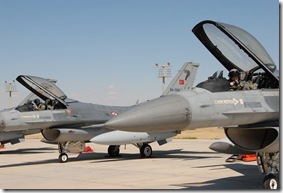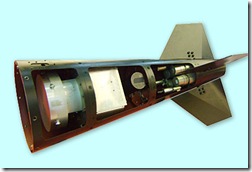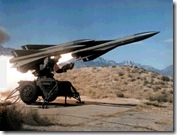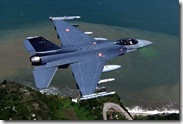And you thought this stuff happens only in technothrillers
 As they say, truth is often stranger than fiction:
As they say, truth is often stranger than fiction:
The plan was based on creating tension with Greece that could lead to a conflict.
The details of the plan went as far as to include the idea of allowing a Turkish fighter aircraft to crash as a result of direct Greek action. Taraf newspaper reports that the plan was set up by 162 officers of the Turkish armed forces of which 29 were high level officers.
Of course, there is also the possibility that this is a deliberate leak by the Turkish armed forces in order to discourage HAF pilots from blasting THK’s airspace violators out of the Aegean sky. Wouldn’t be the first time that psyops are employed to compensate for a military disadvantage (e.g. Imia crisis).
Turkish JDAM-class weapons: Expanded threat for Greek air defenses
 The Hellenic Defense site reports that the Turkish Defense R&D Institute (SAGE) has unveiled a wholly made-in-Turkey tail-mounted guidance kit for unguided bombs, very similar to the US JDAM family. The kit, called HGK (Hassas Gudum Kiti) is initially designed for Mk84 bombs, but a version for Mk82 is reportedly under development.
The Hellenic Defense site reports that the Turkish Defense R&D Institute (SAGE) has unveiled a wholly made-in-Turkey tail-mounted guidance kit for unguided bombs, very similar to the US JDAM family. The kit, called HGK (Hassas Gudum Kiti) is initially designed for Mk84 bombs, but a version for Mk82 is reportedly under development.
As reported in IDEF 2009, HGK-fitted bombs are already in service with THK [Turkish Air Force] F-4E Phantom II aircraft, although it is more likely that the upgraded F-4E/2020 Terminator is employed. SAGE representatives did not clarify whether the weapons are in use by THK F-16C/Ds, but since HGK is compatible with the MIL-STD 1760 data bus, integration on that aircraft is possible.
Performance wise:
HGK combines an INS and GPS receiver; SAGE claims a “better than 10m” CEP when using both. If no GPS signal is available, accuracy drops to a 25m CEP. In comparison, JDAM is claimed to have a 8-10m CEP [although much higher accuracy has been demonstrated in tests].
 It is hard to overestimate the threat that this development presents to Greek air defenses. With the exception of a handful of Patriot & S-300 batteries, the bulk of ground-based air defenses in Greece comprise of MR-SAM systems (I-HAWK) and a wide plethora of (V)SHORADS systems, both radar- and IR-guided. While very capable against an attacking force that is using either unguided weapons or EO/laser-guided munitions (and thus has to enter the engagement envelopes of said terminal defenses), these systems are wholly ineffectual if the attacking aircraft can toss JDAM-class weapons from high altitude at stand-off ranges, virtually untouchable to the majority of air defenses, and still achieve LGB-like accuracy levels.
It is hard to overestimate the threat that this development presents to Greek air defenses. With the exception of a handful of Patriot & S-300 batteries, the bulk of ground-based air defenses in Greece comprise of MR-SAM systems (I-HAWK) and a wide plethora of (V)SHORADS systems, both radar- and IR-guided. While very capable against an attacking force that is using either unguided weapons or EO/laser-guided munitions (and thus has to enter the engagement envelopes of said terminal defenses), these systems are wholly ineffectual if the attacking aircraft can toss JDAM-class weapons from high altitude at stand-off ranges, virtually untouchable to the majority of air defenses, and still achieve LGB-like accuracy levels.
 Typically, the sale of advanced A-G munitions from western industries to Greece and Turkey is tightly controlled in numbers precisely because of the destabilizing potential of these weapons. As a result, limited numbers as well as a relative numerical balance in the PGM inventories of both air forces is the norm. In this case, however, there is nothing to stop the THK from procuring massive numbers of this guidance kit to transform the majority of its Mk80-series stocks into all-weather, stand-off precision-strike weapons. For the first time, the THK will have the ability to strike a great number of fixed targets in Greece under any weather conditions without suffering severe losses – not just on Day-1, but throughout the duration of any foreseeable conflict.
Typically, the sale of advanced A-G munitions from western industries to Greece and Turkey is tightly controlled in numbers precisely because of the destabilizing potential of these weapons. As a result, limited numbers as well as a relative numerical balance in the PGM inventories of both air forces is the norm. In this case, however, there is nothing to stop the THK from procuring massive numbers of this guidance kit to transform the majority of its Mk80-series stocks into all-weather, stand-off precision-strike weapons. For the first time, the THK will have the ability to strike a great number of fixed targets in Greece under any weather conditions without suffering severe losses – not just on Day-1, but throughout the duration of any foreseeable conflict.
Combined with the ongoing acquisition of long-range precision weapons (Popeye, SLAM-ER, JSOW, Harpy) which pose a critical threat to Greek LR-SAM systems and primary C4I nodes, as well as the projected procurement of advanced strike-optimized aircraft (F-35), the overall threat of massive neutralization of Greek air defenses by a concentrated THK offensive is rapidly expanding.





